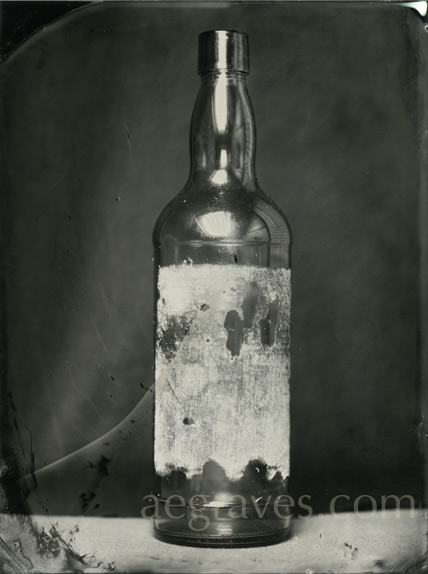
Changing my developing methods for collodion plates has changed EVERYTHING for me.
This year, my plates went from reflecting in a lovely, warm tan to a brilliant, yellow-tinged, cold silver. It took many adjustments to achieve this: using a different aperture on my homemade camera; using different chemistry; changing the way I position my UV lighting, and making very long exposures...
I have struggled to show off the results. It is difficult to portray a hand-poured silver emulsion on a sheet of black-painted aluminum accurately on a monitor. The plates are very high resolution (using silver atoms rather than pixels) and have a subtle tonal range from the black of the plate to the never-quite-white of the silver. My scanner sometimes sees the silver as mirror-like (which it is from the scanner's point of view), and sometimes catches the subtle yellows of the varnish I use in unexpected ways. Since I work primarily at night (both in the darkroom and on my web pages), the initial scans all seemed garishly bright, and I darkened them excessively before sharing images on the web... I have reviewed the scans on a wider range of monitors, and have improved my technique for displaying them more accurately.
After learning so much and enjoying a few great successes, I realized that I need a satisfying "still life" portfolio. Many of my photographs stem from an interest in capturing things that are too complex for me to draw, but I am challenging myself by photographing simple subjects. I know how to make a mountain look vast, or a building look monumental: can I treat a modest liquor bottle with the same seriousness? I believe I can.
Copyright © 2012 - 2020 A. E. Graves